






KHURSHED DORDI

DEUTSCHE










































KHURSHED DORDI

DEUTSCHE


































HRAI firmly believes in the power of teamwork and the value it brings. When diverse talents and perspectives come together, something extraordinary happens. The collective synergy we create goes beyond what any individual can achieve alone and together we see the potential to make a lasting impact on the world.
In today's rapidly changing business landscape, resilience has become a cornerstone for organizational success. Whether facing economic fluctuations, technological advancements, or unexpected global events, the ability to adapt and thrive amidst disruption is crucial. This theme, "Building Resilient Organizations," delves into the strategies and mindsets that empower businesses to not only weather the storm but also emerge stronger.
We are privileged to feature the insights and expertise of thought leaders who offer profound perspectives on fostering resilience within organizations. Their contributions will guide our readers in navigating challenges with agility, innovation, and an unwavering commitment to growth.
Thank you for joining us on this exciting journey.
15
19
22
Building Resilient Organization
BY: AMIT DANG, PRESIDENT & CFO, JINDAL POWER LTD
Building Resilient Organizations: The Power of Belongingness and Empathy
BY: CHELLA PANDIAN PITCHAI , GLOBAL HEAD OF DEI, CULTURE, VALUES & BELONGINGNESS, LEADERSHIP DEVELOPMENT & SUSTAINABILITY, BIOCON BIOLOGICS
The Blueprint for Resilient Organizations: Embracing Strategy, Agility, and Inclusion
BY: KAMINI SHAH, CFO, BIRLASOFT
Resilience is as important as Brilliance in today’s VUCA world
BY: KAUSHIK MITRA, VP & CFO, PEPSICO INDIA & SOUTH ASIA
Building Resilient Organizations: A Blueprint for Success in Uncertain Times
BY: KHURSHED DORDI, GROUP COO, DEUTSCHE BANK, INDIA
Building Resilient Organizations: The Power of Talent
BY: MANU SAIGAL, DIRECTOR - GENERAL STAFFING, ADECCO,
35
Building Resilient Organizations in the Healthcare Market: Navigating Challenges and Embracing Innovation
BY NEERAJ LAL, COO, APOLLO HOSPITALS
INTERNATIONAL LIMITED
39
Empowered Retail: HR Blueprint for Building Resilience
BY: POOJA MINOCHA, VP & CHRO, BATA INDIA LTD
Building Resilient Organizations: Leadership, Adaptability, and Culture
BY: RUCHIRA BHARDWAJA, CHRO, KOTAK LIFE
43
47
Beyond the Buzzword: Embedding Resilience into the Organizational DNA
BY: SANDHYA J, GROUP CFO, NARAYANA HEALTH AND SMITHA SURYANARAYANAN, PARTNER, DATAHIPS LLP
Building a Successful Resilient Organisation
BY: SURAJ CHETTRI, VP, HEAD HR - INDIA & SOUTH ASIA , AIRBUS


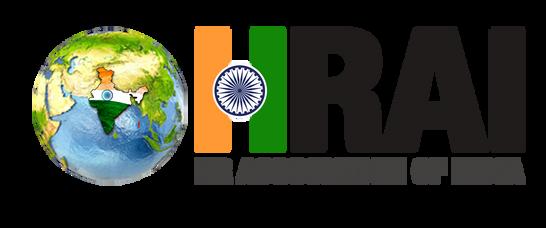


HRAI's success is attributed to its commitment to excellence and tireless efforts in facilitating interactions between HR professionals and subject matter experts. Through its initiatives such as panel discussions, masterclasses, one-on-one talk shows, and Q&A sessions with thought leaders, HRAI provides a platform for professionals to gain in-depth knowledge and practical solutions that can be applied in real-time.
In addition to their educational initiatives, HRAI also recognizes organizations' best practices and individual contributions through awards and conferences. These events celebrate the achievements of exceptional professionals and organizations that have made significant contributions to the HR industry in India. Over the years, HRAI has featured more than 1,000 experts and leading minds in the fields of HR, IT, Marketing, Finance, and more, making it a hub for learning and networking.
For HR professionals in India, HRAI offers unparalleled opportunities to connect with like-minded peers, learn from experts, and gain recognition for their hard work and achievements. By joining HRAI, HR professionals can stay updated on the latest trends, best practices, and strategies that can help them take their careers to the next level
HRAI, founded by Dr. Ankita Singh, drives industry initiatives and organizes prestigious awards for organizations, emerging leaders, and trailblazing women leaders. Notable participants include Blue Star Limited, Reliance Retail, Landmark Group, Oracle, Birlasoft, Vedanta and more.
Our commitment to excellence is reinforced through partnerships with the Great Managers Institute and top 100 great managers, who have taken masterclasses and featured in Forbes Magazine
Elite leaders like Dr. TV Rao, Harjeet Khanduja, and Prasenjit Bhattacharya have graced our one-on-one talk shows, enhancing our members' knowledge base.
Our article initiative showcases thought-provoking articles by eminent leaders from organizations like BCCL, Bajaj Energy, TimesPro, Jio, Welspun Group, Great place to work and Accolite Digital.
The 23 Of 2023 Initiative recognizes exceptional leaders and entrepreneurs based on a predetermined theme. Featured leaders include those from Adani, Reliance, IBM, Infosys, KPMG, as well as notable celebrities.

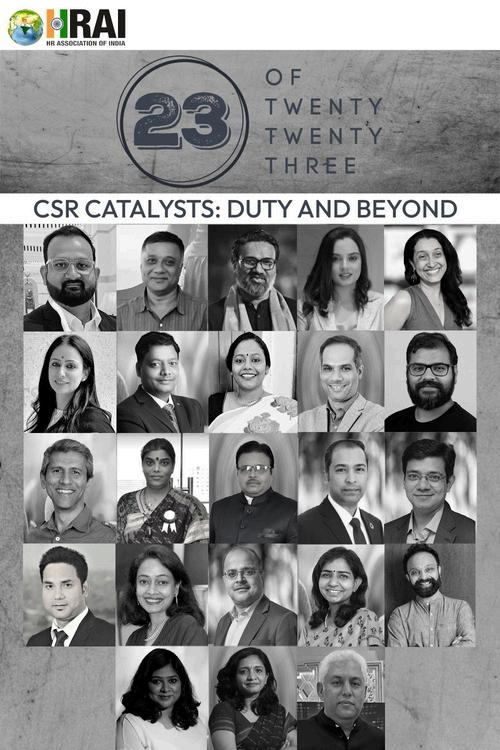
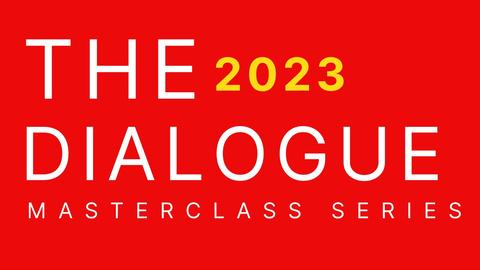

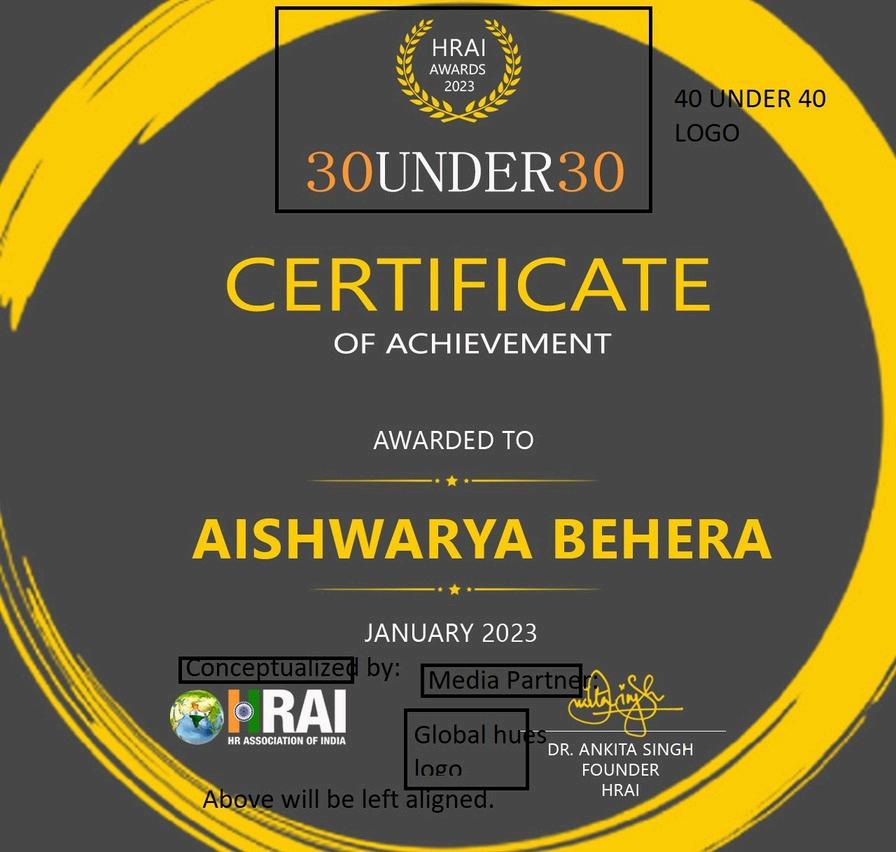


Providing training to enhance employees’ psychological capital can foster resilience in organisations.

Amit is a Senior leader and Financial Services professional with an overall 29 years plus of experience in building sustainable and scalable business. He has done senior leadership both in India and the UK and is currently serving as President and CFO at Jindal Power Limited, part of USD 30 Bn Naveen Jindal group. Before joining Jindal power, he has worked in various senior leadership roles in HSBC group, GE Capital, IDBI Bank, Aditya Birla capital, Edelweiss Group (Now Nuvama Wealth and Investment Limited). Amit is responsible for managing fundraising and treasury, new acquisitions and mergers, finance and accounts, driving transformation, automation and process streamlining, relationships with Banks and Fis at the senior level and ensuring end-to-end regulatory compliances of the company. He brings with him expertise in M&A, Strategy, Corporate & SME financing, Structured Finance, trade / receivable & supply chain finance, credit fund management and risk management.



“Change is the only constant” is an old adage but it accurately describes what leaders are dealing with today Starting with the COVID19 pandemic, we’ve faced ongoing disruptions over the last few years, including widening skill gaps, economic turbulence, the rapid proliferation of AI, and rampant geopolitical tensions.
All signs indicate that many of these forces of change aren’t going away any time soon. In fact, some disruptions are likely to become more pronounced. Rather than letting these challenges snowball into more significant problems, organizations must develop workforce resilience so that their people are prepared to shift gears at a moment’s notice to preserve business continuity no matter what comes next.
Building resilience is vital because organizations that do so are better equipped to withstand unexpected disruptions and recover from them quickly, resulting in a range of benefits.
What is organizational resilience?
Organizational resilience is the ability of an organisation to anticipate, prepare for, respond and adapt to incremental change and sudden disruptions to survive and prosper.
Research on organizational resilience has focused on either defensive or progressive behaviours When organizations adopt defensive strategies, they attempt to prevent
adverse events from occurring.
Conversely, organizations that adopt progressive strategies try to make positive events occur through their actions. As economic uncertainty, natural disasters, and cyber security threats become increasingly common, building organizational resilience should be a crucial priority for companies of all sizes and sectors
The importance of organizational resilience While workforce resilience has always given top-performing companies an edge, it’s becoming increasingly essential now that our working world moves at a faster pace In addition to economic turbulence and AI innovations, market convergence is one of the primary factors that’s causing talent needs to shift.


Organizations must be adaptive and agile to succeed in this volatile environment, particularly during a crisis. Resilient organizations can reallocate talent to respond to shifting priorities, create a culture that helps employees feel safe and empowered, and tap into all of their workforce’s skills to create innovative solutions to pressing challenges Alternatively, companies that lack resilience will suffer bottom-line losses and struggle to maintain employee morale.
High-reliability organizations (HROs) have a unique way of thinking and use five interdependent strategies that foster resilience:
They prioritize reliability and are sensitive to possible threats. There is a focus on the possibility that something could go wrong. They don’t rely on simple interpretations of events. HROs make a deliberate effort to create a complete picture of the work environment. They also encourage diversity in perceptions so that assumptions can be challenged
The leadership in HROs is strong, and senior management and staff are aware that their decision-making can affect the entire organization.
HROs are committed to a resiliency mindset that recognizes things will go wrong yet can be identified and resolved by minimizing harm.
HROs value their staff by recognizing those who are experts and allowing them to make critical decisions during a crisis. Senior leaders practice walking around to reinforce behaviours and to help fix critical issues
Why are some organizations more resilient than others?
The research on organizational resiliency suggests that successful firms are prepared for
adversity and are proactive and flexible when encountering a crisis Resilient firms prepare for difficult situations and show a “generalized capacity to investigate, learn, and act, without knowing in advance what one will be called to act upon.”
Resilient firms prepare for difficult situations and show a “generalized capacity to investigate, learn, and act, without knowing in advance what one will be called to act upon. ”
How can organizations become more resilient?
Here are key principles which we are following at our organization to make it more resilient:
Agility: Leaders who embrace change and can make quick, informed decisions foster resilience
Empathy and Emotional Intelligence: Understanding team dynamics and mental well-being helps create a supportive environment.
Visionary Thinking: Leaders with a forward-looking perspective guide organization's through uncertainty by envisioning long-term goals.
Strong Balance Sheets: Maintaining financial reserves and diversifying revenue streams protect organisations against economic volatility.
Cost Management: Efficient cost structures allow flexibility in managing financial disruptions without compromising core operations
Scenario Planning: Organizations should regularly engage in scenario planning to identify potential risks and develop contingencies.
Crisis Management Protocols: Predefined action plans for various types of disruptions

(natural disasters, economic downturns, cyber threats) ensure the organisation can respond swiftly.
Sustainability Practices: Companies focusing on environmental, social, and governance (ESG) factors tend to be more resilient, as these practices often align with long-term risk management
4. Operational Flexibility
Diversification: Relying on diverse markets, products, or services reduces vulnerability to external shocks
Agile Workflows: Flexible processes and the ability to reallocate resources quickly are crucial to responding to crises or opportunities.
Digital Transformation: Investing in technology helps ensure the continuity of operations and enables more efficient adaptation to changing circumstances.
5. Employee Well-being and Development
Reskilling and Upskilling: Continuous investment in employee development ensures that the workforce remains adaptable to technological advancements and evolving industry needs.
Mental Health Support: Providing resources for employee mental health and promoting worklife balance contribute to a more engaged and resilient workforce
6. Organizational Culture
Learning and Innovation: A culture that encourages continuous learning, experimentation, and innovation allows quick adaptation to market changes
Collaboration: Fostering teamwork, crossfunctional communication, and trust empowers employees to contribute to problem-solving.
Psychological Safety: Creating an
environment where people feel safe sharing ideas, taking risks, and failing without fear of retribution builds a resilient workforce.
Redundancy and Backup Systems: Building redundancy into supply chains, such as having multiple suppliers, mitigates the risk of disruption.
Supply Chain Transparency: Understanding the entire supply network enables organizations to quickly identify and address weak points
Fostering resilience in leadership, culture, operations, and strategy can help organizations survive disruptions and seize new growth opportunities.
Key takeaway:
Resilient organizations anticipate, prepare for, respond and adapt to incremental change and sudden disruptions to survive and prosper
Organizational resilience occurs when organizations create, invent and discover unknown markets
It is important for organizations to guide against failure yet also to be strategic in recovering from a disruption
Resilient organizations do not restrict resources when dealing with threats to their existence
Successful firms are prepared for adversity and yet are also proactive and flexible when encountering a crisis.
High-reliability organisations demonstrate resilience through effective teamwork and cognitive functioning among staff to mitigate disaster
Providing training to enhance employees’ psychological capital can foster resilience in organisations.





Chella Pandian Pitchai, Global Head of DEI, Culture, Values & Belongingness, Leadership Development & Sustainability at Biocon Biologics, is a pioneering HR leader and certified coach with over 25 years of experience. He excels in architecting inclusive cultures, driving talent development, fostering innovation, and championing sustainability. Recognized with awards such as HR Leader of the Year in Malaysia (2017-2019) and among the 501 Most Influential HR Professionals worldwide, Chella is pursuing a Doctor of Business degree in Digital Transformation in HR and is dedicated to women's empowerment and social impact through his global leadership and community initiatives.
In today's fast-paced and ever-changing business landscape, building resilient organizations is crucial for long-term success. At the heart of resilience lies a sense of belongingness, which fuels growth, innovation, and sustainability. But what drives belongingness?
Value + Inclusion + Empathy + Growth + Ownership + Pride = Belongingness
This equation illustrates that belongingness is the outcome of a combination of factors, including:
• Value: Feeling valued and recognized within the organization
• Inclusion: Being part of an inclusive environment where diverse perspectives are encouraged
• Empathy: Experiencing empathy from leaders and colleagues towards oneself and others
• Growth: Having opportunities for growth and development
NBV - Next Best Version: Finding ones NBV leads to retention and long term growth for self and Organiation.
• Ownership: Taking ownership and responsibility for one's work and actions
• Pride: Feeling proud of one's contributions and the organization's mission
The Catalyst for Innovation: Inclusion fuels innovation, driving the organization to be the best for customers and ensuring sustainability.
When these elements come together, they create a sense of belongingness, which is critical for building resilient organizations.

The Foundation: Value
Value is the starting point for belongingness When employees feel valued, they're more likely to feel connected and committed to the organization.
Valued → Next Best Version (NBV)
When employees feel valued, they're empowered to find their NBV, striving for excellence and growth. This growth mindset fosters a culture of continuous improvement.



Inclusion fuels innovation, driving the organization to be the best for customers and ensuring sustainability
Empathy: The Core Skill for Innovation and ESG
Empathy is the foundation of innovation and ESG (Environmental, Social, and Governance) Empathy leadership towards self (selfempathy), employees, customers, and society is crucial for building resilient organizations.
As employees grow, they develop a sense of ownership, taking pride in their work and the organization. This pride drives performance, leading to increased productivity and innovation.
Sustainability is the key to resilience. When organizations prioritize sustainability, they're better equipped to adapt to challenges and thrive in an ever-changing environment
In conclusion, building resilient organizations requires a focus on belongingness, driven by value, inclusion, empathy, growth, ownership, and pride. By prioritizing these elements, organizations can create a culture of growth, innovation, and sustainability, ultimately leading to increased resilience and success


Kamini Shah is the Chief Financial Officer and Executive Board Member at Birlasoft, with over 25 years of experience spanning Finance, Supply Chain, Commercial, and Business Planning across Fortune 500 companies. She has led diverse teams across multiple countries and cultures, driving financial efficiency and long-term business strategies. A Chartered Accountant by training, Kamini brings deep expertise in financial management, performance optimization, and process design. Her leadership is focused on fostering growth, profitability, and the development of efficient systems. In addition to her CFO role, Kamini plays a key part in advancing Diversity, Equity, and Inclusion (DEI) at Birlasoft. As Executive Sponsor of the DEI Council, she leads initiatives that cultivate a more inclusive and equitable workplace, ensuring equal opportunities for a diverse workforce.


Financial investments in workforce development like in-house training programs can bridge the skill gap, ensuring that the workforce evolves with changing industry dynamics.


In an era defined by rapid technological evolution and unforeseen global challenges, resilience has emerged as a crucial attribute for organizations globally. The accelerating pace of change driven by economic volatility, generative AI breakthroughs, and shifting societal expectations has redefined the landscape of business opportunities and challenges. Technology now stands as the foremost disruptor, compelling companies to adapt swiftly and strategically.
However, alongside technological advancements, there looms a significant skill deficit, with India projected to face a shortfall of 30-32 million skilled workers by 2025, escalating to 47-49 million by 2027. This dual challenge of harnessing disruptive technologies while addressing talent shortages underscores the need for resilient strategies. As businesses navigate this complex environment, resilience is no longer a mere buzzword but a fundamental business imperative for turning challenges into growth opportunities
Financial Resilience as a Foundation
Building financial resilience is crucial for organizations aiming to navigate economic challenges effectively Implementing strong financial strategies that prioritize risk management, liquidity planning, and cost optimization can fortify a company’s stability

and ensure long-term growth. Striking a balance between short-term financial performance and long-term sustainability is key. This requires decision-making that doesn’t sacrifice future viability for immediate gains. Investing in innovation and technology further strengthens this balance by enhancing efficiency, driving growth, and positioning companies to meet evolving customer demands
Organizations must also allocate resources towards upskilling and reskilling initiatives that align with technological advancements to address the talent shortage Financial investments in workforce development like inhouse training programs can bridge the skill gap, ensuring that the workforce evolves with changing industry dynamics. By prioritizing sustainable practices and continuously adapting to market trends, businesses not only reinforce their financial foundation but also gain a competitive advantage in a rapidly shifting world.
Role of Culture and Inclusion

A resilient organization thrives on diversity and inclusion, as these elements promote creativity, innovation, and varied problem-solving approaches. Companies that prioritize diversity and cultivate inclusive workplace cultures consistently outperform their peers both in financial performance and employee satisfaction. According to Gartner, employees who work in diverse and inclusive teams see a 12% increase in performance. BCG notes that revenue can rise by up to 19% in organizations with strong DEI ties When employees feel valued and empowered to share their unique perspectives, they contribute to well-rounded discussions and innovative solutions, enhancing the organization's ability to navigate complex challenges
Moreover, organizations that invest in holistic well-being initiatives not only boost morale and productivity but also reduce turnover, attract top talent and effectively adapt to change. Leadership plays a crucial role in shaping this resilient and inclusive culture By setting the tone for adaptability, continuous improvement, and a genuine commitment to diversity, leaders can inspire their teams to embrace change and contribute to the organization’s long-term success Ultimately, a culture that values inclusion and well-being is not just a strategic advantage but a cornerstone of resilience.
Organizations that prioritize learning empower their workforce to adapt, innovate, and stay ahead of industry trends.
Adaptability is critical to organizational success. Agile organizations, characterized by flexible structures and processes, can pivot quickly based on real-time data, enabling them to navigate disruptions more effectively. Research by McKinsey shows that agile organizations have a 30% higher chance of outperforming their rivals and are five to ten times faster at driving change and decisionmaking. This agility stems from simplified operating models that empower experimentation and learning from mistakes To truly excel, businesses must combine innovative thinking with data-driven processes that yield actionable insights.
Central to agility is a culture of continuous learning and innovation Organizations that prioritize learning empower their workforce to adapt, innovate, and stay ahead of industry trends. This culture not only enhances problemsolving and creativity but also strengthens longterm resilience By nurturing a learning environment, businesses can ensure they are prepared for the future, continuously improving to meet new challenges and opportunities.


Leadership plays a pivotal role in shaping a resilient future, by ensuring resilience becomes ingrained in the organization’s DNA.
The challenges of recent years have underscored the need for organizations to prioritize resilience. Whether facing global disruptions or industry-specific upheavals, the ability to adapt quickly, innovate continuously, and sustain operations has become a key differentiator These experiences have shown that resilience is not just a reactive measure but a proactive, ongoing commitment.
Moving forward, organizations must embed sustainability and ethical considerations into their core business practices Long-term success depends on balancing profitability with responsibility. This approach not only ensures resilience but also builds trust with stakeholders. Leadership plays a pivotal role in shaping a resilient future, by ensuring resilience becomes ingrained in the organization’s DNA It’s more than surviving crises and thriving in a constantly changing world. As organizations look ahead, resilience should be viewed as a journey, and not a destination.




Resilience can help employees feel more satisfied with their job because it provides them with methods of tackling stress and alleviating work-related anxiety.
Kaushik Mitra is the Vice President & CFO at PepsiCo India, with over 30 years of experience across diverse industries like Tata, GE, and Reckitt Benckiser. At PepsiCo for 23 years, he's led finance for its Foods, Beverages, and Nutrition businesses across India and South Asia, with roles spanning from Dubai to Vietnam. A strong advocate of diversity and inclusion, he has increased women’s representation in leadership. Kaushik is also a speaker, author of the “Crossing Over” trilogy, and a musician with a YouTube channel. He lives in Gurugram with his wife Reetika and son Arjun.

Resilience is not new to most of us who have had to overcome significant challenges both physical and mental to pursue our goals whatever they may be. I remember the day before my Chartered Accountancy Final group two Mathematics exam The previous exam had not gone well, and I was feeling nervous Then as luck would have there was an unscheduled power cut. I am talking about the mid-nineties in Kolkata, a period notorious for load shedding. Already behind on my last revision, anxious and uptight, the power cut was the final nail in the coffin I tried concentrating, but my mind was fogged up and I just couldn’t make any progress. I tried to catch a wink but the hammering inside my head wouldn’t allow me to. I gave up and sat in the balcony teary eyed. Fortunately, my dad was back early that day and seeing me like that he realized something was wrong. He took me out for a walk and then suggested I pack my books. We walked to my aunt’s house a couple of blocks away. Luckily, they had power. The walking calmed my nerves, and I felt the sense of urgency returning. If it wasn’t for my dad that day, I would have not made it to the exams. Sometimes resilience comes from inside you and sometimes it comes from others.
In Corporate life, we are always under pressure to deliver results and the clock is ticking. The pressure to perform culture puts a lot of stress on modern professionals. Resilience is the tool we need to handle this reality of everyday work life. So how do we train ourselves to be resilient. None of us are born resilient A lot of our childhood experiences shape our character and this aspect of resilience. Our son has been to six

schools in five cities across four countries before heading out to college. This experience while being quite challenging, has built his resilience like nothing a classroom lecture would have done. So, our circumstances and experiences shape resilience. Why is resilience important from an organization’s point to view? For one resilience can help employees manage stress and motivate them to face challenges with determination There are several others For example resilience can help employees feel more satisfied with their job because it provides them with methods of tackling stress and alleviating work-related anxiety. Resilient employees may have better self-esteem because they can handle the challenges they face at work with confidence and positivity.
Such employees know that facing challenges at work can be easier when they can lean on their colleagues for support, so it can help teams develop positive workplace relationships Resilient employees can accept feedback openly and work to move past conflicts with coworkers, and resilience fosters an environment that encourages open-minded dialogue in response to conflict

Here are some strategies to improve resilience from a recent study on the subject:
1. Be authentic
By being authentic, we are being true to the values and beliefs we hold in high regard. These could be things like honesty, integrity, trustworthiness and loyalty Studies have shown that by finding congruence between these values, beliefs and your actions, it can lead to increased emotional intelligence. Meaning, when you experience emotionally tricky situations, you’re more likely to be able to cope with them
2. Maintain perspective
Sometimes at work we experience ups and downs and that’s completely normal. Understandably, it’s hard to maintain a positive mindset However, we can alter a negative mindset, by installing a growth mind-set This mindset encourages the taking on of challenges, which we can learn from and improve. By focusing on solutions, we can manage our negative thoughts to promote an environment where mistakes are welcomed and pressure is seen as a motivator
3. Manage your stress
Find time to relax by establishing a healthy work-life balance. Work is an important part of modern life; however, your career shouldn’t suffocate you Humans are social animals and by allowing ourselves to socialise and enjoy our free time can have a profound impact on our well-being and work performance. Research has shown that by engaging with our families, friends and work colleagues we can work effectively whilst making the most of our lives outside of employment.
4. Work with colleagues
Seek advice from your peers. Not only can these individuals offer you support and guidance, but
also important performance feedback that opens doors to new learning opportunities and improvement
This social working environment has also been seen to create a sense of togetherness and strength that couldn’t be found in independent workers Study has also shown that companies like Google, who encourage workforce diversity, achieve more due to their ethos of innovation and change.
5. Stay healthy
In order to build resilience at work, staying active and having a balanced diet play important roles in providing you with the right head space to tackle upcoming barriers. Exercising is a great way to de-stress and clear your mind, as well as releasing serotonin and endorphins needed for increased confidence and feelings of self-worth
6. Build networks
The team around you are a huge asset that you need to make the most of. There is an old saying that states ‘you are the average of the 5 people you spend the most time with’ By surrounding yourself with people that motivate, inspire and challenge you, you can build a network of people that is driving you towards the place you want to be.
Conclusion:
Resilience in today’s fast moving, demanding and dynamic work culture is a must have toolkit for survival and success. It is what can make the difference between surviving and thriving in the chaos The key here is to not feel like a victim and always be present in the moment, maintain perspective, manage stress and most importantly build a support system around you to fall back on when you need help.


Khurshed Dordi is Managing Director & Group Chief Operating Officer (COO) India at Deutsche Bank AG. India is Deutsche Bank’s largest franchise outside of the home market in Germany. Khurshed has over three decades of international experience in the financial services industry. His diverse experience includes leadership roles in leading businesses, setting up of global capability centres, overseeing strategy and risk management & control units, corporate functions, regulatory & compliance units, at a national, APAC and global level. This covers the entire spectrum of the industry across consumer banking, private banking, commercial banking, corporate & institutional banking and corporate finance. Among his many other responsibilities, Khurshed is also responsible for country governance, culture, conduct, regulatory/reputational risk for the Deutsche Bank Group in India. Additionally, he heads the CSR and Diversity, Equity and Inclusion council for India, is an ESG advocate and an active proponent of sustainable development priorities. Khurshed is also an educator for MBA students, a mentor, and an internationally certified coach. He has authored a book on self-development called ` Corporate Quicksand,’ which is a best seller on Amazon.


In today's fast-paced and often unpredictable world, building resilient organizations has become more than a strategic imperative; it is a defining feature of successful businesses Whether dealing with economic disruptions, technological advancements, global pandemics, or geopolitical tensions, organizations that can adapt, recover, and thrive are those that have truly mastered the art of resilience In other words, this entails fostering a culture of adaptability, innovation, and continuous improvement, all the while ensuring robust systems and processes are in place to support the organization’s ability to respond effectively to any challenge
Organizational resilience is not merely about surviving adversity. It is about thriving amidst change, maintaining a competitive edge, and securing long-term success At its core, resilience is an organization's ability to anticipate, prepare for, respond to, and adapt to both incremental changes and sudden disruptions. This goes beyond crisis management it is about adopting a proactive, forward-thinking approach that enables organizations to turn potential threats into opportunities for growth. Thereby integrates the development of both strategic and operational capabilities across all levels of the organization. Resilient organizations learn from

To build resilience, organizations must focus on several key pillars that support a culture and system conducive to long-term sustainability and success:
Effective leadership is the cornerstone of organizational resilience Leaders must not only navigate their organizations through crises but also foster a culture of resilience by empowering employees to make decisions and drive innovation. Leadership resilience involves having a clear vision, managing uncertainty with confidence, and committing to continuous learning and adaptability. Governance structures play an equally important role. They must embed resilience into strategic decisionmaking processes through robust risk management, contingency planning, and scenario analysis Transparent and accountable governance ensures that resilience is a core element of the organizational strategy, not an afterthought.


A resilient organization is built on a strong culture where employees feel empowered, engaged, and ready to adapt to change. This requires a focus on employee well-being, inclusivity, and trust. When employees are healthy, motivated, and confident, they are more likely to contribute to the organization's resilience. Key to this is creating a culture of psychological safety, where employees feel safe to express ideas, raise concerns, and challenge the status quo. Organizations that promote openness and transparency foster continuous learning and improvement both vital to resilience. Investing in skills development, particularly in problem-solving, critical thinking, and emotional intelligence, further enhances resilience.
and integrating
and
into organizational strategies is key to resilience.
Resilient organizations must possess both operational and strategic flexibility. Operational flexibility involves the ability to adjust day-to-day processes in response to immediate challenges, such as diversifying supply chains or adopting flexible work arrangements. Strategic flexibility, on the other hand, is about the capacity to pivot the organization's direction when necessary, balancing the core mission with the need to
reimagine its fulfillment in a changing environment
In today's digital age, technology and innovation are critical enablers of resilience. Technology can help organizations anticipate disruptions, automate processes, and enable remote work and digital collaboration. During crises, organizations that have embraced digital transformation are often better positioned to continue operations with minimal disruption. The COVID-19 pandemic is an apt example of how organizations who had already embraced digital transformation could shift to remote work and continue operations with minimal disruption. Innovation, in this context, involves a continuous search for new ideas, processes, and products that can enhance resilience Organizations that prioritize innovation are better equipped to adapt to market changes and capitalize on opportunities that arise from crises.
Resilience is not built in isolation Organizations operate within complex ecosystems that include customers, suppliers, regulators, investors, and communities. Engaging stakeholders meaningfully is crucial to building resilience For instance, strong supplier relationships can help manage supply chain disruptions, while positive customer relationships can ensure continued loyalty during challenging times. Transparent and proactive communication with stakeholders is essential During crises, effective communication helps maintain trust and avoid reputational damage. Understanding and integrating stakeholder needs and expectations into organizational strategies is key to resilience.
A proactive approach to risk management is integral to organizational resilience. Beyond traditional risk management, resilient organizations can also explore opportunities that can arise from risks. Scenario planning, for example, allows organizations to develop strategies for various future scenarios, ensuring preparedness for a range of potential disruptions Risk management must be embedded in the organization's culture, with every employee understanding the risks and their role in mitigating them. This holistic approach will ensure that resilience is ingrained

at every level of the organization.
Measuring resilience is challenging but crucial Organizations can assess resilience through metrics related to recovery from disruptions, operational flexibility, employee engagement, and stakeholder relationships. Continuous improvement is a key aspect of resilience, requiring regular assessment, learning from experiences, and adjusting strategies accordingly. Organizational learning is essential to enhancing resilience. After a crisis, resilient organizations conduct thorough reviews to


Building resilient organizations is not a one-time effort; it is an ongoing process that demands commitment from leadership, engagement from employees, and support from stakeholders.
understand what happened, how it was handled, and what could have been done better. This learning is then integrated into strategies and processes, ensuring that the organization becomes more resilient over time
Building resilient organizations is not a onetime effort; it is an ongoing process that demands commitment from leadership, engagement from employees, and support from stakeholders. By focusing on key pillars of leadership and governance, culture and people, operational and strategic flexibility, technology and innovation, and stakeholder engagement, organizations can develop the resilience needed to navigate today's complex and rapidly changing environment.
Ultimately, resilient organizations are not only those that withstand disruptions but those that emerge stronger and more competitive They understand that resilience is about more than survival it is about thriving in an unpredictable world by embracing change, learning from experience, and continuously evolving.
ARTICLE BY KHURSHED DORDI



Manu, Director - General Staffing, Adecco, boasts an illustrious career spanning two decades. She excels in business transformation, P&L management, innovative project implementation, human capital oversight, and intricate resource strategies. Her strategic prowess shines through as she effectively handles client escalations and engages with senior stakeholders across diverse sectors. Manu's expertise includes cultivating enduring client partnerships, fostering highperformance teams, pioneering novel business approaches, and demonstrating authentic, inclusive leadership. Her entrepreneurial acumen translates vision into impactful outcomes. Moreover, her professional acumen is reinforced by ITIL Foundation V3 and CoBit Foundation certifications, underscoring her commitment to industry best practices. Manu holds a Bachelor's degree in Electronics and Communications from Mysore University and a PGPMax (Post Graduate Program in Management for Executives) from the Indian School of Business in Hyderabad.


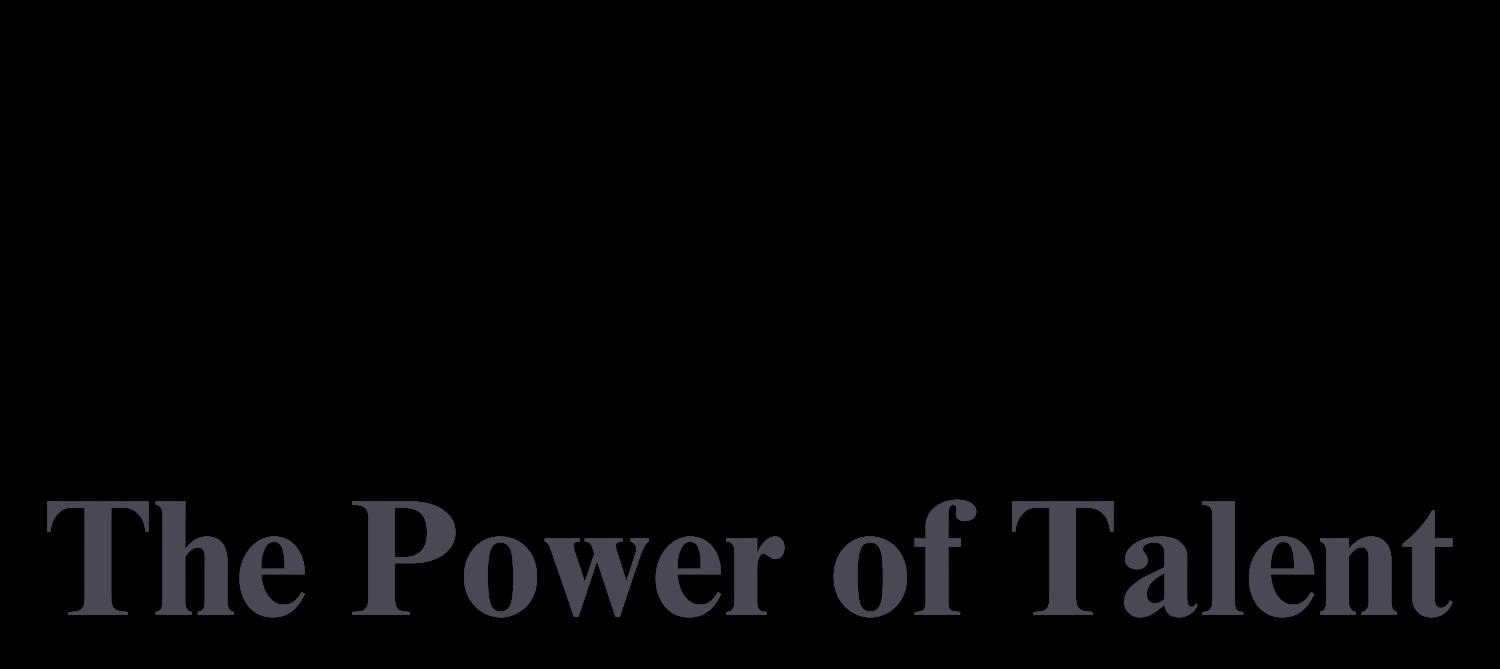
In today's volatile and unpredictable business landscape, organizations are facing unprecedented challenges. Economic downturns, geopolitical tensions, technological disruptions, and environmental changes are just a few of the factors that can significantly impact a company's operations To navigate these turbulent times successfully, businesses must remain resilient. This means having the ability to adapt, learn, and bounce back from setbacks.
In an interview with Harvard Business Review, Indra Nooyi, the former CEO of PepsiCo stated: "Resilience is about having the ability to bounce back, to learn from your mistakes, and to adapt to changing circumstances. It's also about having a strong sense of purpose and a belief in your organization's mission "
Building resilient organizations requires a multifaceted approach that addresses various aspects of their failures. To navigate the challenges and uncertainties of today's volatile environment, organizations must invest in adaptable talent, foster a resilient culture, ensure strong leadership and governance, promote innovation and agility, maintain financial resilience, build a robust supply chain, invest in technology and infrastructure, and cultivate strong external relationships By addressing these key factors, organizations can enhance their resilience and better position themselves for long-term success.
At the heart of building resilient organizations lies the power of the right talent. The right talent is more than just a collection of skills and experience. It is about having individuals who possess a unique combination of attributes that enable them to thrive in uncertain environments These attributes include:
Adaptability: The ability to embrace change and quickly adjust to new circumstances.
Problem-solving: The capacity to identify and address challenges creatively and effectively.
Resilience: The mental and emotional fortitude to bounce back from setbacks and persevere through adversity.
Collaboration: The skill of working effectively with others to achieve common goals.
Innovation: The ability to generate new ideas and develop innovative solutions.
In addition to the factors mentioned above the "magic ingredient" that successful resilient organizations often possess is “a strong sense of purpose and shared values.” A clear sense of purpose provides employees with a sense of meaning and direction, which can help them navigate challenges and setbacks Shared values create a sense of unity and cohesion within the organization, fostering collaboration, trust, and a commitment to the company's mission. When
employees are aligned with the organization's purpose and values, they are more likely to be motivated, engaged, and resilient
Most successful resilient organizations not only invest in the right talent but also cultivate a strong sense of purpose and shared values. This combination creates a powerful foundation for organizational resilience, enabling companies to adapt to change, overcome challenges, and thrive in the long run.
When an organization has a workforce that is rich in these qualities, it is much better equipped to weather storms and emerge stronger. These individuals can identify emerging trends, anticipate risks, and develop strategies to mitigate them. They can also foster a culture of innovation and continuous improvement, which is essential for long-term success
Most successful resilient organizations not only invest in the right talent but also cultivate a strong sense of purpose and shared values.
organizations to stay ahead of the curve and adapt to changing market conditions The right leadership at top and middle management can play a crucial role in fostering a positive and supportive organizational culture. These individuals are more likely to be empathetic, compassionate, and respectful of others. They can create a sense of belonging and community, which can help to boost morale and productivity. A positive and supportive culture is essential for building resilience, as it provides employees with the emotional support they need to cope with challenges and setbacks.
Another important factor in building a resilient organization is not just hiring the right people. It also requires creating a workplace environment that supports and encourages these individuals. This means providing opportunities for professional development, recognizing and rewarding high performance, and fostering a culture of trust and transparency.

One of the key ways in which the right talent contributes to building resilient organizations is by creating a strong foundation for organizational learning and good leaders These individuals are more likely to be curious, inquisitive, and open-minded. They are always seeking new knowledge and perspectives, and they are willing to share their insights with others. This culture of learning helps
Building resilient organizations is a multifaceted endeavor that requires a holistic approach While the right talent is undoubtedly a critical component, it is not the sole determinant of success. Organizations must also invest in fostering a supportive culture, promoting innovation and agility, ensuring financial resilience, and building strong external relationships For organizations that may be lacking in these areas, it is essential to take proactive steps to address the deficiencies. This could involve implementing new strategies, investing in employee development, and seeking external expertise By recognizing the importance of building resilience and taking concrete action to address weaknesses, organizations can position themselves for longterm success in today's volatile and uncertain business environment.
ARTICLE BY MANU SAIGAL



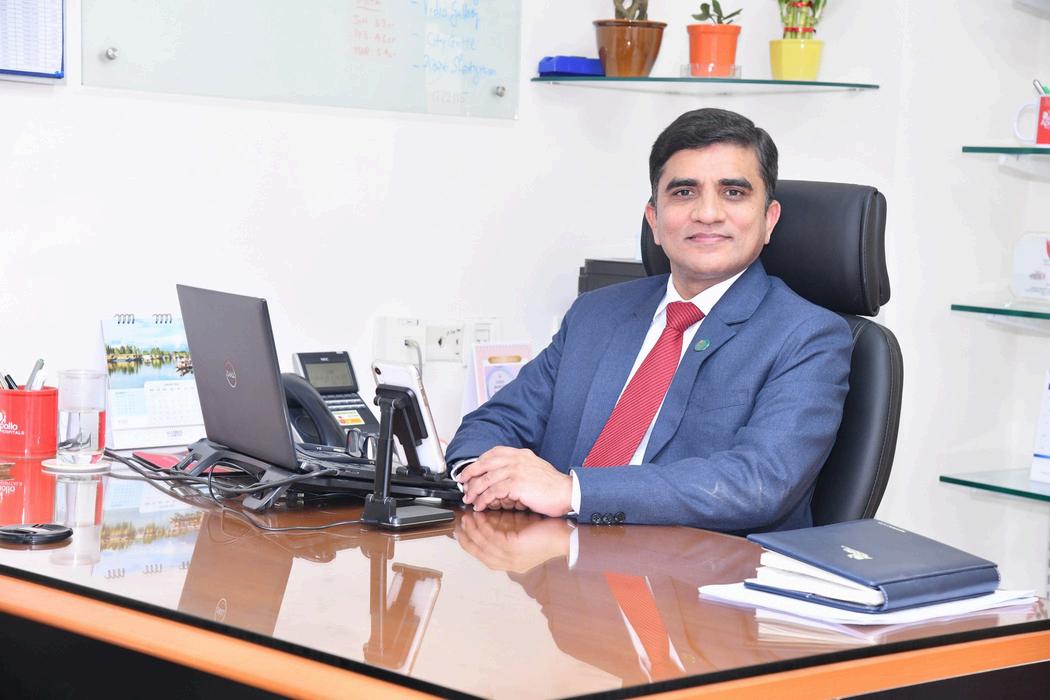


Strong leadership and engaged employees are crucial in fostering resilience.
Mr. Neeraj Lal brings over two decades of experience in healthcare management and currently serves as the COO of Apollo Hospitals in the Gujarat Region and President of the AHPI Gujarat Chapter. He holds a Master’s in Hospital Administration from TISS, Mumbai, and a Medical Sciences degree from PGI, Chandigarh, where he earned the Aikat Memorial Gold Medal in 1996. Renowned for his expertise in operations, strategy, and quality, he is an ISQua-approved surveyor. Mr. Lal is also on the advisory boards for the MBA programs at IIM Bodh Gaya and NMIMS, Mumbai. He has held senior roles in prominent hospitals like Medicover and Shalby, focusing on business development and P&L growth, and contributes as a guest faculty member in hospital administration and healthcare quality at various Indian universities and business schools.

In a constantly evolving healthcare landscape, resilience is essential for hospitals to thrive. Challenges like the global pandemic, rising costs, and complex medical care have exposed weaknesses in traditional healthcare systems. Building resilience is now crucial for ensuring sustainable operations, better patient outcomes, and financial stability. Apollo Hospitals, a leading Indian healthcare provider, has set benchmarks by overcoming operational challenges with innovative solutions in financial management, workforce resilience, technology, and partnerships
1. Optimizing Financial Operations: Revenue and Cost Management
One of the biggest challenges for healthcare organizations is financial instability due to fluctuating revenue streams, regulatory changes, and competition. Apollo Hospitals has focused on innovative strategies to optimize revenue and reduce costs, setting a model for financial resilience.
Key Strategies:
Revenue Diversification: Hospitals can expand services to underserved markets, increasing revenue.
Technology Adoption: Digital tools like telemedicine, AI diagnostics, and automated processes help reduce costs and improve revenue cycles.
Data-Driven Decision Making: Utilizing data analytics and predictive models for patient flow and resource allocation mitigates risks and optimizes financial health
Examples:
Specialized Centres: Apollo established centres of excellence like the Apollo Proton Cancer Centre and the Apollo Colorectal Cancer Institute, attracting both domestic and international patients. Also, Gurukul Sessions at Apollo Hospitals, Ahmedabad are organized daily for the relatives of patients. These sessions aim to educate them on various healthcare topics, serving as an effective patient engagement initiative. The interactive and informative nature of the sessions has not only enhanced patient satisfaction but has also contributed to the hospital's financial growth by attracting more patient parties.
Health Checks: Apollo's Preventive Health Check packages generate revenue and encourage early diagnosis, engaging patients and corporate clients alike.



2. Addressing Staffing Challenges: Building a Resilient Workforce
Healthcare workers are essential, but burnout, shortages, and fluctuating demand strain the workforce. Apollo invests heavily in its staff to build resilience, implementing wellness initiatives and innovative staffing models to meet increasing demand.
Strategies for Workforce Resilience:
Continuous Learning: Ongoing education and skill development for staff improve both job satisfaction and patient care.
Support Systems: Mental health resources, flexible schedules, and peer support reduce burnout and increase engagement
Staffing Flexibility: Agile staffing models, including cross-training, allow hospitals to quickly respond to patient surges.
Examples:
Apollo Clinical Excellence (ACE) Program: Provides continuous training and upskilling for medical and non-medical staff, ensuring they are prepared for evolving healthcare demands. Cross-training enhances the workforce's ability to manage patient volumes across departments
Apollo Acculturation program for Imbibing Excellence (AAPIE) induction program: AAPIE is a three-day training workshop for new members at Apollo Hospital, Ahmedabad It aims to ease the transition for new hires by providing essential information about the Apollo Family, HAZMAT protocols, facility management, quality control, fire safety, basic life support (BLS), IT policies, prevention of sexual harassment (POSH), grievance procedures, leave policies, and the code of conduct.
Resilience in healthcare also involves improving patient-centered care, enhancing patient experiences and outcomes.
Resilience in healthcare also involves improving patient-centered care, enhancing patient experiences and outcomes. Apollo integrates technology to ensure efficient operations and better service delivery, keeping pace with market demands.
Key Elements:
Personalized Care: Tailored care enhances patient outcomes and builds trust, nurturing long-term relationships. Innovative Service Delivery: Services like home-based care and telehealth improve access to healthcare while easing operational demands.
Continuous Feedback: Regular patient feedback allows hospitals to adapt services and meet patient needs.

Examples:
Apollo 24/7 Digital Platform: This telemedicine and online pharmacy service offers easy access to Apollo’s network, reducing pressure on physical facilities and expanding the hospital's reach to underserved areas.
Robotic Surgery: Apollo’s adoption of robotic surgery technologies, like the da Vinci Surgical System, improves patient outcomes and financial growth by attracting complex, high-value cases.
Apollo Fond Farewell: At Apollo Hospitals, Ahmedabad, we have launched a pickupand-drop cab service for patients' families post-discharge, improving their overall hospital experience.
4. Improving Operational Efficiency through Data-Driven Insights
Technology plays a critical role in building resilient healthcare organizations. Hospitals leveraging cutting-edge solutions are better able to address operational challenges, improve care, and ensure compliance
Key Technologies:
Telemedicine and Remote Monitoring: These tools allow hospitals to extend care beyond physical boundaries, easing the strain on in-house resources
AI and Data Analytics: AI diagnostics and predictive analytics enable early detection, while optimizing resource allocation and improving efficiency.
Cloud-Based Systems and EHRs: Digital systems enhance coordination and ensure operational continuity even in disruptions
Examples:
Smart Beds and Monitoring Systems: These advanced beds monitor patients' vital signs in real time, enhancing patient safety and reducing the need for manual checks, thereby improving operational efficiency. At Apollo Hospitals, Ahmedabad, we have implemented these smart beds in the Crown Wing.
Appointment Management Systems: AIpowered tools improve patient flow, reduce wait times, and ensure efficient resource utilization, especially during the COVID-19 pandemic.
Hospitals leveraging cutting-edge solutions are better able to address operational challenges, improve care, and ensure compliance.
5. Leadership and Culture: Driving Organizational Change
Resilient healthcare organizations rely on adaptable, innovative, and collaborative cultures. Strong leadership and engaged employees are crucial in fostering resilience. Apollo’s leadership has demonstrated a proactive approach to managing crises and driving organizational growth.


Resilience should be a core value in decision-making, with leaders empowering teams and communicating effectively during crises.
Building a Resilient Culture:
Leadership Commitment: Resilience should be a core value in decision-making, with leaders empowering teams and communicating effectively during crises
Employee Engagement: Engaging staff in planning and problem-solving promotes ownership and accountability.
Collaborative Ecosystems: Partnerships with other healthcare providers, suppliers, and the community ensure access to necessary resources during complex challenges.
Examples:
COVID-19 Crisis Management: Apollo’s leadership ensured the availability of critical care resources by launching isolation centers, mobile testing, and telemedicine services during the pandemic.
Employee-Led Innovation: Through the Apollo Catalyst program, staff are encouraged to propose ideas for improving operations and patient care Leadership support for promising ideas fosters a culture of continuous improvement.
Conclusion
Healthcare organizations face significant operational challenges, but practical strategies across financial optimization, workforce management, technology, and organizational culture can foster sustainable growth. Apollo Hospitals exemplifies this resilience through innovative approaches and a patient-centered model By embracing cutting-edge technology, strategic revenue generation, and building a resilient workforce, Apollo continues to set standards for healthcare in India and internationally, positioning itself for future success

Agile leadership isn’t just about making quick decisions; it’s about fostering a culture where innovation and learning are encouraged.

Pooja Minocha, an esteemed leader as VP & CHRO at Bata India Ltd, has over two decades of global HR expertise across diverse industries. Specializing in Strategic HR, Organization Capability, and Employee Communication, she has spearheaded innovative programs at esteemed companies like Merck/MSD, AXA, and Reliance. Pooja, a postgrad in HR, is a certified behavioral training coach with a passion for organizational transformation. A visiting faculty at management institutes, she's dedicated to upskilling young talent and supporting underprivileged children through NGOs. An advocate for creativity, Pooja is committed to fostering engagement, agility, and innovation in the workplace.




In today’s fast-paced and unpredictable business environment, building resilient organizations is more crucial than ever For the retail sector, this means not only facing challenges head-on but also leveraging them as opportunities for growth. Resilience is about creating a dynamic environment where leadership, employees, and processes work in harmony to adapt, innovate, and thrive
Agile Leadership: Navigating Change with Vision
In retail, leaders must guide their teams with clarity while remaining adaptable. Agile leadership isn’t just about making quick decisions; it’s about fostering a culture where innovation and learning are encouraged. It means anticipating market shifts, embracing new ideas, and being flexible enough to pivot strategies as needed.
At Bata, we’ve embraced agile leadership to turn market disruptions into growth opportunities By fostering a culture of adaptability and swift decision-making, we’ve managed to stay ahead of industry trends and respond effectively to changing market conditions.
Empowering employees is fundamental to building a resilient organization. In retail,

where frontline staff are crucial to brand perception, equipping them with the right tools, training, and autonomy is vital. Empowered employees are more engaged, proactive, and capable of delivering exceptional customer experiences.
At Bata, we prioritize creating an environment where every team member feels valued and integral to our success This empowerment not only boosts morale but also enhances customer satisfaction, driving long-term loyalty and engagement.
The digital era has revolutionized retail, and those who fully embrace digital transformation build greater resilience. This involves more than just adopting new technologies; it’s about reimagining processes, enhancing customer engagement, and evolving business models Our commitment to digital transformation at Bata has allowed us to remain agile and responsive.
Strengthening Supply Chains: Building Robust Operations
A resilient retail organization depends on a robust supply chain Strengthening this backbone involves diversifying suppliers, investing in technology, and preparing for potential disruptions. A flexible and wellmanaged supply chain ensures consistency and reliability, even in challenging times.
Bata’s proactive approach to supply chain management has been instrumental in maintaining product availability and customer satisfaction. By investing in diverse supplier networks and advanced technology, we’ve fortified our supply chain against global disruptions
In retail, understanding and responding to customer needs is at the core of resilience Delivering exceptional experiences consistently requires a deep understanding of customer preferences and a commitment to ongoing improvement. Our customer-first approach at Bata has been critical in navigating disruptions. By continually gathering feedback and refining our offerings, we’ve built strong, lasting relationships with our customers, ensuring their loyalty and enhancing their shopping experience.
Resilient leaders look ahead. They anticipate trends, prepare for challenges, and set a clear direction Visionary leadership involves planning for the long term and ensuring the organization is equipped to handle future uncertainties.
Delivering exceptional experiences consistently requires a deep understanding of customer preferences and a commitment to ongoing improvement.

At Bata, our leadership team is dedicated to exploring new opportunities and developing forward-thinking strategies. This commitment to vision and planning has positioned us for continued success in an ever-evolving market.
Leadership extends beyond decision-making; it involves shaping a resilient organizational culture. Building a culture that values adaptability, innovation, and collaboration requires creating an environment where employees feel safe to experiment and support each other.
Our culture at Bata, grounded in teamwork, integrity, and innovation, fosters resilience By nurturing these values, we’ve built a strong, supportive community ready to tackle any challenge that arises.


Demonstrating resilience and staying focused during uncertain times inspires teams to follow suit, building confidence and strengthening the organization’s ability to handle challenges.
Resilient leaders set the standard through their actions. Demonstrating resilience and staying focused during uncertain times inspires teams to follow suit, building confidence and strengthening the organization’s ability to handle challenges. In times of uncertainty, the leaders remain focused and calm, reinforcing our dedication to our goals and inspiring our teams to stay resilient.
As we look to the future, our path is clear. Resilience will guide us, inspire us, and propel us forward We are ready to embrace the future with unwavering determination and confidence, transforming every challenge into a catalyst for growth and every change into a chance to excel.
In the dynamic world of retail, resilience isn’t just about surviving; it’s about thriving. Together, we will shape a future where resilience is our greatest asset and our commitment to excellence is unmatched.
Here’s to the journey ahead, where resilience will be our compass and our greatest strength

Ruchira Bhardwaja is the Chief Human Resource Officer at Kotak Mahindra Life Insurance (Kotak Life), with over 25 years of experience across industries like Manufacturing, Retail, Banking, and Insurance. Before Kotak Life, she held key roles in the Tata Group and BFSI sector. An alumna of IRMA, NMIMS, and BHU, she is GTML certified from Wharton. Passionate about mentoring women, Ruchira also enjoys photography and storytelling.


In the financial services sector, building resilience is not merely about adopting new technologies but about fundamentally rethinking business models to harness these advancements strategically.



In an era characterised by rapid technological changes and global uncertainty, resilience stands out as a critical attribute for organizations' aiming not just to survive but to thrive. This becomes important as ‘resilience’ as an attribute, empowers them to navigate and adapt to unforeseen disruptions, leverage emerging trends for strategic advantage and maintain operational continuity. These are crucial factors when it comes to fostering a culture of innovation and flexibility that can turn challenges into growth opportunities. With this article, let’s delve into the essential aspects of building resilient organisations, including leadership dynamics, adaptive business models, cultural resilience, global perspectives and more.
Leadership and Resilience
Resilient leadership is about creating a vision and a strategy that anticipates and reacts to challenges and opportunities with foresight and agility. Such leaders exhibit a profound understanding of their environment, enabling them to guide their organizations through crises and opportunities alike
They promote a culture where risks are managed and opportunities are seized.
Resilient leadership transcends traditional command-and-control models to foster an environment where creativity and adaptability flourish.
It is about maintaining a steadfast vision
while navigating turbulent times
Resilient leaders, in more ways than one, display emotional intelligence, handle ambiguity, decisiveness and possess a communicative approach that aligns the entire organisation towards common goals
Their key trait is not merely the ability to survive setbacks but to foresee and mitigate them before they impact the organisation. They encourage a proactive stance towards problemsolving, transforming potential threats into opportunities for growth This is precisely why every organisation seeks a resilient leader.
Resilient leaders, in more ways than one, display emotional intelligence, handle ambiguity, decisiveness and possess a communicative approach that aligns the entire organization towards common goals.
The hallmark of a resilient organization is its ability to pivot and adapt with agility. Adaptive business models are not fixed but are fluid, evolving with the changing landscapes of technology, consumer behavior and global economics. This approach requires embracing ambiguity and making strategic decisions that are reversible or can be iterated upon as situations develop. The most resilient organizations are those that innovate continuously, integrating flexibility into their operations and strategic planning to respond dynamically to new challenges
Adaptive business model sectors are increasingly driven by technological innovation, cost efficiency, and regulatory compliance.
Technological Disruption and Strategic Resilience: In the financial services sector, building resilience is not merely about adopting new technologies but about fundamentally rethinking business models to harness these advancements strategically. As we look to the future, the intersection of technology and finance is set to become more complex and integrated, demanding a forward-thinking approach.
One of the used cases is how blockchain can extend beyond basic financial transactions to redefine asset management and compliance
Smart contracts can automate and secure complex agreements, reducing the need for intermediaries and enhancing transparency, which in turn decreases fraud and operational risks
Artificial Intelligence as a Strategic Core: Beyond customer service and risk management, AI is pivotal in predictive analytics, offering unprecedented insights
As societal expectations shift towards sustainability, financial services are increasingly incorporating
the ESG criteria into their business and investment decisions.

into customer behaviour, market trends and potential disruptions. This strategic use of AI enables financial institutions to not only react to current conditions but also proactively shape their business strategies
Quantum Computing in Risk Analysis: Looking further ahead, quantum computing’s ability to process vast amounts of data at unprecedented speeds means that financial institutions could potentially identify and mitigate risks in real-time, a capability that could redefine market dynamics and the concept of due diligence.
Sustainable Tech-Driven Models: Lastly, as societal expectations shift towards sustainability, financial services are increasingly incorporating the ESG (Environmental, Social, and Governance) criteria into their business and investment decisions Technology plays a crucial role here, enabling companies to track and analyze ESG metrics accurately, thus aligning financial growth with sustainable practices. This not only appeals to ethically conscious consumers but also mitigates long-term investment risks


Integrative Tech Ecosystems: Resilience, when it comes to financial services, will most likely depend on creating integrative tech ecosystems that seamlessly connect various technological innovations. For example, combining IoT with big data analytics and AI could lead to more personalised and efficient customer experiences This could lead to personalised insurance plans to real-time financial advice, transforming the customer journey into a more interactive and responsive experience.
A resilient culture is the bedrock upon which organizations can withstand and prosper amidst continual change. Such cultures are characterized by mutual trust, open communication and an unwavering commitment to shared values. They empower employees by fostering an environment where diverse ideas are celebrated and where learning from failure is as valued as celebrating success. Building a resilient culture means embedding, an inherent capacity to seamlessly adapt, into the very fabric of the organisation This underscores the fact that resilience is not an afterthought, but a fundamental attribute of the organisational ethos.
For example, a financial services firm might undergo digital transformation, changing many of its operational aspects and customer interactions, yet maintain its commitment to customer privacy and ethical standards. Such alignment ensures that while strategies and operations evolve, the foundational values remain untouched, providing continuity amid change.
Cultures that prioritise learning and inclusivity are particularly resilient. These organizations
treat challenges as learning opportunities, encouraging innovation and maintaining high engagement levels across the workforce
A nuanced global perspective is crucial for building organizational resilience, especially in industries like financial services that are affected by international markets and regulations. Resilient organizations understand that strategies successful in one region may not work in another, due to cultural, economic, and regulatory differences.
This perspective entails not only adapting to but anticipating changes in the global business environment. It involves integrating diverse strategies that cater to local realities while maintaining a coherent global strategy. This approach ensures that organizations can leverage global opportunities and mitigate risks associated with geopolitical and economic volatility.
Building resilience in organizations is a multifaceted endeavour that requires strong leadership, adaptive business models, a resilient culture and for sure, a global outlook. By focusing on these areas, organizations can navigate the complexities of the modern business environment more effectively. Resilient organizations do not just withstand disruptions; they use them as catalysts for growth and transformation, aligning their strategic objectives with the changing landscape to secure long-term success and sustainability
In today’s rapidly changing world, resilience is not just a defensive strategy; it is an essential attribute that enables organizations to thrive in the face of disruption.



Sandhya J is the Group Chief Financial Officer of Narayana health with two and half decades of diverse experience across Health Care, FMCG, GBS, Technology and Infrastructure Engineering. She is business focused finance professional with deep experience in Strategic Finance, Governance, Technology, Transformation and Shared Services Regular speaker at National and International Conferences, she is regarded as a Thought Leader in business finance, analytics, technology, governance and diversity.


ha is a seasoned strategy and analytics professional. runs her own Data & Analytics advisory practice the e of which also encapsulates her belief - DataHIPS ds for Data Hidden in Plain Sight , which is very often ase when it comes to decision making. She has worked firms such as Envestnet Yodlee, Swiss Re, HP, MG, and E&Y, across analytics, strategy, and ulting. She has sponsored and championed multiple initiatives throughout her corporate career. Smitha an MBA from SP Jain Institute of Management & arch, Mumbai and recently accredited herself as a ified Financial Planner (CFP) because of her keen est in evangelizing financial wellness as a stepping e to an equitable world.




An oft-used word in the corporate world, the word "resilience" comes from the Latin verb resilire, which means "to rebound" or "to recoil". The word was introduced into the English language roughly 400 years ago. While we can find several examples of personal resilience when we look around us, resilient organizations are not always easy to locate. Most companies do not publicize their failures, and so we need to dig deep to learn the mantra for building resilient organizations.
Building resilient organizations: The cultural context
Twenty years ago, the landscape of Indian corporates was dominated by companies that seemed invincible. However, if you look at the Nifty Top 100 from two decades ago, many of those companies no longer occupy their oncesecure positions. For instance, companies like Satyam Computer Services, which was once a tech giant, collapsed under the weight of a scandal, largely due to a culture of deception and a failure in leadership integrity Similarly, Hindustan Motors, once a leading car manufacturer, failed to adapt to changing market dynamics, and the company’s rigid culture contributed to its decline. These examples underscore the critical role that culture plays in organizational resilience
Resilience beyond the buzzword
Resilience is a term frequently used in boardrooms and strategy sessions, often in the context of short-term survival. It is typically associated with having the right tools, processes, and strategies to combat internal and
external challenges However, true resilience goes far beyond these superficial layers; it is deeply rooted in the culture of an organization. A resilient organization is one where culture acts as the bedrock, enabling it to navigate not just immediate disruptions but also to thrive in the long term
Encouraging personal resilience as the foundation of organizational resilience
Given that people spend a significant portion of their lives at work some studies suggest up to 33% it’s only natural that our values, attitudes, and approaches are influenced by our organizational culture. Conversely, we bring our personal values, beliefs, and attitudes to the workplace, which collectively shapes the organizational culture.
To build resilience, a dual approach is essential: strengthening individual capabilities while reinforcing systemic structures. Organizations should invest in both personal development and robust systems to effectively navigate challenges Key strategies include fostering a supportive work environment, providing resilience training, and implementing flexible processes that adapt to change. This approach not only helps individuals thrive in adversity but also strengthens the organization against future uncertainties
The ideal scenario is creating a reinforcement loop where employees draw inspiration from the organization's resilience to enhance their personal resilience, which in turn strengthens their role within the organization. This cyclical process fosters a more resilient workforce and a more resilient organization overall.
Considerations while building a culture of resilience
Build a culture of listening: Organizations that fail to listen to their employees, customers, and the broader market often find themselves out of touch and unable to adapt A case in point is Nokia Despite being a market leader in mobile phones, Nokia's leadership failed to listen to the changing demands of consumers and the shift towards smartphones. This deafness to market signals led to its rapid decline, illustrating how a lack of a listening culture can erode resilience.
Ego and Inflexibility: Organizations that are entrenched in their ways of working, driven by an egoistic belief that "this is the right way because it has always been done this way," are at risk of losing relevance. Kodak is a classic example of this. Despite inventing the digital camera, Kodak's leadership clung to their profitable film business, unable to shed the ego-driven belief that film was irreplaceable This rigidity led to their downfall, showing that resilience requires a culture of humility and openness to change.
Encouraging Creativity and Innovation: A culture that fosters creativity and innovation is essential for resilience. Companies that stifle new ideas or discourage out-of-the-box thinking are unlikely to survive in a rapidly changing
world. Interestingly, no company intentionally stifles innovation. Every CEO champions an innovation culture, yet innovation often gets stifled by design through limiting beliefs, power-centric cultures, lack of empowered leadership, and a tendency to reward compliance while reprimanding failed risks. Sometimes, organizations are blind to how they inadvertently kill innovation Consider Blockbuster, which had multiple opportunities to innovate and adapt to the digital age but chose to stick with its traditional business model. In contrast, Netflix, with a culture that encourages innovation and actively fights against these stifling forces, has not only survived but thrived by continuously reinventing itself.

Identifying Bureaucracy: Resilient organizations can identify and address internal bureaucracy. They can distinguish between processes that are essential for scaling and those that exist merely as power plays. For example, General Electric (GE), once a model of success, struggled with excessive bureaucracy in its later years, which slowed decision-making and stifled innovation A resilient culture is one that remains lean and agile, cutting through red tape to ensure that processes serve the organization’s growth rather than hinder it.


Resilient organizations are those that dig deep into their soul and genuinely live by the values they espouse.
Leadership Insecurity and Arrogance:
Leadership insecurity and arrogance are two sides of the same coin, and both can blind an organization from building for the future. Leaders who are insecure may surround themselves with yes-men, stifling dissent and critical thinking Arrogance can lead to overconfidence in current strategies, ignoring the need for adaptation. The downfall of Lehman Brothers in 2008 can be attributed to a leadership culture of arrogance and insecurity, where risky bets were encouraged, and dissenting voices were suppressed.
Lip Service Themes: Many organizations today boast of their commitment to themes like diversity, sustainability, and employee well-being However, for resilience, it’s not enough to talk the talk; an organization must walk the walk. A culture that only pays lip service to these ideals without truly embedding them into its operations is fragile The recent controversies surrounding certain tech giants and their treatment of employees and commitment to sustainability highlight the gap between rhetoric and reality. Resilient organizations are those that dig deep into their soul and genuinely live by the values they espouse
Building a resilient organization is not about having the right tools or strategies in place; it’s about cultivating the right culture. A culture that listens, is willing to shed its ego, encourages innovation, and truly lives by its values is one that will stand the test of time. As the examples of once-mighty companies that have fallen from grace show, resilience is not a buzzword but a deep-seated cultural trait that can make or break an organization


Today one needs to be at the cutting edge of technology and hit the market with the right product at the right place at the right time.
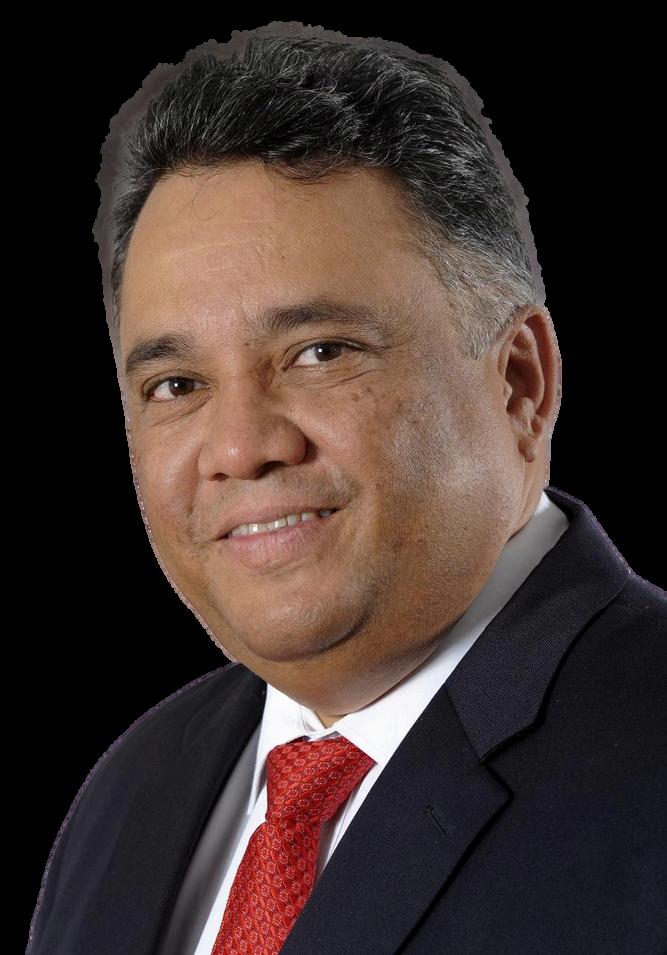

Suraj holds a Bachelor's in Sociology from Ranchi University and a PGDPM from XISS. With over 30 years of experience, he has worked with Bata, Bosch, GM, and Textron, where he served as Deputy MD for India. In 2011, he joined Airbus India and is currently the VP and Head of HR for India & South Asia, overseeing HR operations and leading the Bangalore site. Under his leadership, Airbus has won several awards, and Suraj himself has been recognized with accolades, including Most Iconic HR Leader 2024 by World HRD Congress and Top 5 DivHERsity Champion by Herkey. He is also a life member of NHRD, ISTD, and NIPM, serves on various boards, and is a regular speaker, mentor, and contributor to HR discussions.


In today’s world speed is everything, there is no consolation prizes available for the one who comes in second. Every organisation needs to be ready to grab the opportunity as and when it presents itself. One needs to take the first movers’ advantage and this is absolutely not possible to achieve without one being resilient in one’s business operations.
Being resilient can today be found in every mission and vison statement. It has become the buzz word or let me say the management jargon for every leader, manager and corporate guru and rightfully so because your very survival is in question. In this VUCA world gone are the days that you could survive if you were good at something and you continuously improved yourself Today one needs to be at the cutting edge of technology and hit the market with the right product at the right place at the right time. Which is only possible if you have an organisation which is “resilient”. Time, speed and preparedness are the elements of resilience and in this world of “survival of the fittest”, the minutest advantage that one can get is highly appreciated and welcomed by the business world.
The basic question each organisation needs to answer for themselves individually and collectively is if they see the need to be strategically resilient? If yes, than look at cocreating a relevant culture, values, processes and systems and ensuring that it becomes the fabric or DNA of the company. If business is what business does than those who are resilient,
agile and ready stand a better chance to succeed and shine every time challenges comes knocking. Many a great and mighty company have disappeared from the canvas of business because they were not able to change with the times and lacked resilience and agility. A resilient and agile organisation is future ready.
Such companies encourage innovation with a focus to learn from their failures, improve and reorient oneself. They need to align all their functions within this preview and work together to reach their full potential One purpose and vision towards resilience should be integrated in the overall ambition. It creates a healthy conflict culture with inclusion of all stakeholders, silo free coordination between departments is the hallmark of a resilient organisation The recent pandemic was a good example of the advantage of being resilient. Companies which had this in their DNA were quick to identify, predict, develop solution and seamlessly execute it in parallel without hampering their business and finally ensure that they can turn challenges into opportunities While others have become case studies on how not to lead through turbulent time.

Companies have seen the value of being resilient both in terms of the topline and bottomline profits and due to the dynamic and ruthless nature of business many companies have transformed themselves into leaner, resilient focused, resilient based and resilient centric organisations. They are today more effective & efficient in terms of time, cost and processes which has led to faster results and lower costs impacting business
Resilient leadership leads to a trust-based organisation which is high on empowerment and giving decision-making power to the ones who are closest to the action and have the best assessment of the situation There is hence optimization of resources, cross-functional collaboration, no delays in intra and inter departmental decision making and decisionmaking powers are available at the team level. It empowers employees and makes sure that business is always “one step ahead” of themselves and their competition. Digital adoption has also made the work environment more user friendly and transformed the company in the way they work and drive business all leading to a more conducive culture and workplace (Hybrid Working) and has been important to take the organisation to the next level.
Today we need to focus and metamorphose into a learning centric culture, focus on skills and competencies, take decisions and actions based on data and analytics, change workplace, processes and systems, support a digital workplace within very short lead time with low cost and high efficiency. It also keeps them close to their customer (internal & external) and helps them ensure that you adhere to you value proposition to deliver customer value and delight which can be done through the various tools available.
The way we look at rapid change today in this VUCA world is leaning processes for a resilient workforce ready to take on the challenges of the world.
Various tools and equipments are readily available to us today – VSM (Value stream mapping), CRM, VOC (Voice of customer), agile methodology, Kanban, SaFe, Technology Roadmap, HR Roadmap etc.
Hence it contributes both in terms of direct and indirect value creation. The highly sought-after interventions are ones that make your organisations resilient and sustainable Brick and mortar companies has changed into a beautiful seamless product focused approach with the customer at the heart of the process. The way we look at rapid change today in this VUCA world is leaning processes for a resilient workforce ready to take on the challenges of the world. Indirectly it also leads to a great culture and value system, employee satisfaction, improvement in the morale of the employees as well as high levels of engagement within the company as the employees are highly engaged in every aspect of the company from the processes to the systems to the products.
The strategic advantages we are seeing in the early adaptation of new technology, which is beneficial in bringing about ease of life, work, and business New needs and requirements are being translated into new products which are creating new businesses and new employment. The concept of a circular economy that everyone in society is benefiting. Ease of doing business in bringing in new players into the market and such organisation are thriving as they can fail fast or grow rapidly due to their structure of operations.
ARTICLE BY SURAJ CHETTRI



